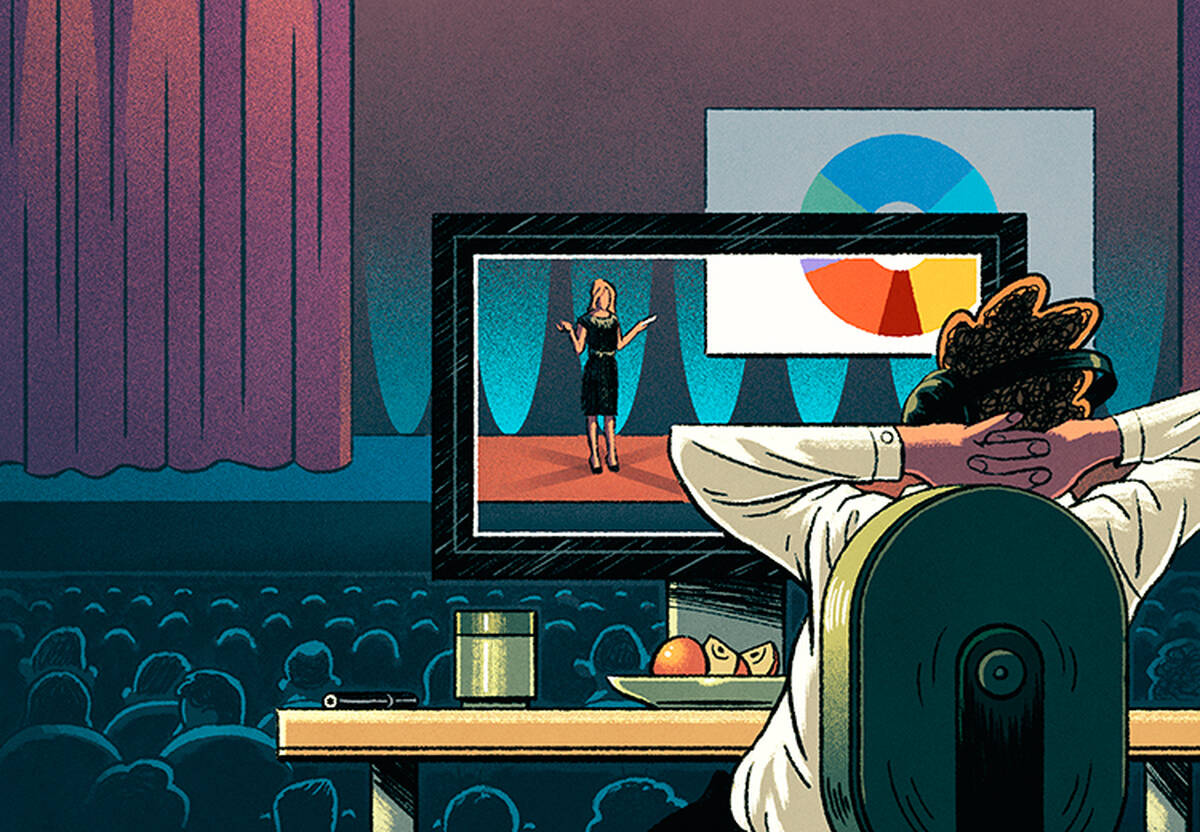Marketing Feb 2, 2018
How Businesses Can Best Use Content Marketing to Generate Leads
New research on B2B companies highlights an effective way to bridge the gap between sales and marketing.

Michael Meier
It’s your lunch break, but instead of chatting with colleagues or idly scrolling through Twitter, you eat your sandwich at your desk and tune in to a 60-minute webinar offered by a consulting company.
The consultants hope that when you have finished the webinar (and the sandwich), your company will be more likely to purchase their services. Is that the case? Or would the consultants have been better off sending a representative to lead a lunchtime workshop or inviting you to a seminar they sponsor?
The webinar is the winner, according to new research from Bobby Calder, a professor marketing at the Kellogg School, and Wei-Lin Wang, Edward Malthouse, and Ebru Uzunoglu, all of the Medill School’s Spiegel Research Center.
In a study of content marketing in business-to-business companies, the researchers found that digital offerings, such as webinars, white papers, and branded blogs are valuable tools that result in more leads and, ultimately, more sales than in-person content-marketing events, such as conferences, workshops, and roundtable discussions.
“There’s a real opportunity for, if not integration, at least high-level cooperation between sales and marketing around content marketing.”
These kinds of digital offerings are “really important, right up there with sales contacts,” Calder says. “Not only does a digital-content-marketing effort really work in the B2B environment, it offers an opportunity for sales and marketing to come closer together and even integrate their approaches.”
Testing the Effectiveness of B2B Content-Marketing Activities
Content marketing, or CM, has exploded in the last decade, as marketers increasingly realize that traditional advertising is not the magic bullet it used to be and that CM is a tool that resonates with today’s customers.
“There are so many ads out there, and there’s so much parity among products it’s difficult to find ways to differentiate them,” Calder explains. So brands and companies have turned to CM, using everything from sponsored quizzes on highly trafficked sites such as Buzzfeed to splashy in-person events such as Chipotle’s Cultivate Food, Ideas, and Music Festival.
“With content marketing, you’re not so much trying to communicate value as to create value beyond the product,” Calder says.
Although a growing body of research has demonstrated the effectiveness of content-marketing efforts like these in business-to-consumer companies, CM’s role in B2B companies has been less understood. Calder’s research not only validates the major investment companies like GE and IBM have made in B2B content marketing, it is also the first to test the effectiveness of different types of content-marketing activities.
The Power of Digital Content Marketing
A leading consulting firm provided the researchers with data on events it hosted between 2013 and 2016. The dataset included 1203 digital events and 919 in-person ones. The firm also shared information about the business accounts it worked with, including job titles for more than 160,000 employees from 784 key accounts who were invited to participate in these CM offerings, as well as information about nearly 50,000 sales opportunities associated with those accounts.
The researchers gathered information on which employees attended the in-person events as well as on the employees and accounts that accessed the service provider’s digital materials.
This allowed the researchers to conduct a statistical “horse race,” Calder says, after controlling for factors including geographic proximity between the service provider and the account, the length of the business relationship between the two, and larger economic trends that might have affected sales results.
“If you look at in-person activities versus digital content marketing,” Calder says, “how do they compare in terms of impacting sales results—sales leads and the outcome of the leads?”
Account employees’ engagement with digital CM opportunities, it turned out, resulted in more sales leads and more completed sales, known as won opportunities. But somewhat to Calder’s surprise, in-person CM events did not appear to influence leads or won opportunities at all.
Calder believes this may be because attending an in-person event often requires so much more of account employees’ time that it may feel more like a burden than a benefit: you have to leave your desk, put aside other work tasks for a chunk of time, and perhaps travel to the event. Once you are there, it is easy to get distracted by the social aspects of the gathering—cocktails, schmoozing, networking—and forget about the company that sponsored the event.
By contrast, if you are nibbling your PB&J and watching a webinar, you might feel more strongly that the sponsoring company is “doing something for me,” Calder says. “They’re providing me with something to do over lunch that is a valuable use of my time. Customers really appreciate that the company is adding value to the business relationship.”
These results point to the enormous power of media content to influence behavior.
The power of digital content marketing “makes more sense than might be intuitive,” Calder explains. “Media content provides an experience and people really get engaged by it, because that experience connects to values and goals in people’s lives, in this case, their professional lives, that can be more important to them than a business transaction.”
Content Marketing Should Target the Whole Hierarchy
Another important takeaway from the research: it is important to target CM at junior and mid-level account employees, not just executives.
Although high-level employees contributed most to the increase in sales leads, the researchers found that account employees at all levels helped boost leads when they engaged with digital CM.
The researchers note that only engagement from high-level employees resulted in an increase in won opportunities, but this does not mean marketers should ignore those who are lower down the totem pole: it is probable that high-level employees act on the advice of more junior ones when they award contracts. And in a few years, when those junior employees advance, you want them to have a positive association with your company.
Ending the Sales-Marketing Conflict
Calder believes the research points to a way that content marketing could help heal the friction between sales and marketing that is widespread at many B2B companies.
It is common for salespeople to feel frustrated with marketing efforts and to gripe that marketers do not add much value in the B2B environment. Marketers, for their part, often blame poor outcomes on the lackluster work of salespeople.
But this research suggests marketers do have an important role to play in generating leads, a role that can complement sales.
Customers want high-value content, and it is no longer enough for salespeople to give them a product brochure as an afterthought. So Calder suggests marketers focus on developing a strong portfolio of online content offerings—a task that should be viewed “not just as collateral support activity, but a major way of doing marketing,” Calder says.
“There’s a real opportunity for, if not integration, at least high-level cooperation between sales and marketing around content marketing,” he says.



